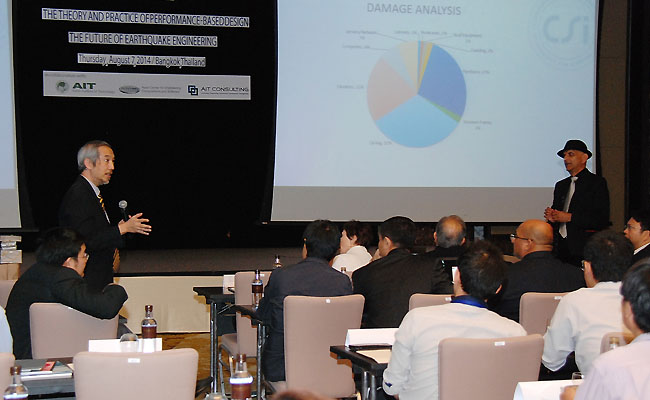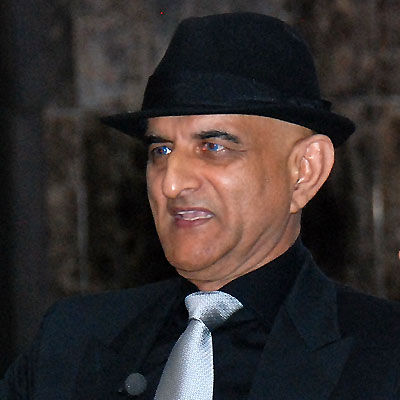The international technology transfer event in Bangkok on 7 August
2014 was staged by California-based CSI in collaboration with AIT
Consulting, ACECOMS and the Asian Institute of Technology. The sold-out
one-day conference attracted 137 participants representing 83
organizations from Thailand and nine other countries in Asia.
Mr. Habibullah, the charismatic founder of CSI,
which is recognized globally as the leader in the development of
software tools for structural and earthquake engineering, headlined the
day-long event as the keynote speaker. He delivered four
technology-packed presentations on the benefits of performance-based
design, which he described as “a major shift from traditional
structural engineering design concepts.”
AIT Vice President for Academic Affairs Prof.
Sivanappan Kumar delivered the welcome remarks on behalf of the
institute. In his words of thanks to Dr. Naveed Anwar, Executive
Director, AIT Consulting, and his team of organizers, he noted the
regional impact made by AIT structural engineers in the field of
earthquake engineering, and in particular the role played by ACECOMS
through its longstanding cooperation with CSI.
Also gracing the event was a diplomatic representative from the
Embassy of Pakistan to Thailand, Bangkok. Assoc. Prof. Anek
Siripanichgorn, Chairperson, Civil Engineering Committee, Engineering
Institute of Thailand, attended as a special guest and addressed the
participants. Accompanying Mr. Habibullah was Mr. Syed Hasanain Muzami,
Executive Vice President, CSI, USA, and Ms. Marilyn Wilkes, Senior Vice
President, CSI, USA.
SEE PHOTO GALLERY
The CSI President and CEO presented the theory and practical
application of nonlinear analysis and performance-based design with
terms and analogies that were very familiar to the practicing
structural engineers who attended.
Mr. Habibullah emphasized that PBD provides a new
method for determining acceptable levels of earthquake damage. It is
based on the recognition that yielding does not constitute failure of a
structure and that preplanned yielding of certain parts of a structure
during an earthquake can actually help to save the rest of the
structure, he said.
AIT’s own Professor Pennung Warnitchai, a highly
recognized earthquake engineering expert from the AIT School of
Engineering and Technology, joined Mr. Habibullah as a speaker, opening
the seminar with a presentation of the latest structural engineering
research being conducted at AIT concerning earthquakes and wind. He
also shed light on the present seismic risks in Thailand and the
region, as well as the various work of AIT researchers to improve
designs to mitigate the impact of such natural hazards.
Participants were largely senior-level structural
engineers and practitioners drawn from the private sector, governments
and universities around the region, AIT Consulting organizers said.
Notable attendees included representatives of the Committee for Quality
Control of High-Rise Buildings Construction Projects – Myanmar, Nepal
Engineering Council, Association of Structural Engineering of the
Philippines, Building and Construction Authority of Singapore, and
leading consulting firms from within the Asia-Pacific region.
According to Dr. Naveed Anawar, Executive Director, AIT Consulting,
the PBD seminar was previously held in San Francisco, New York City,
and Los Angeles, and was organized in Bangkok for the first time to
benefit of the construction industry and engineering professionals in
Asia.
Today, CSI software is used by thousands of
engineering firms in over 160 countries for the design of major
projects, including the One World Trade Center in New York City, the
Burj-e-Khalifa in Dubai, and the 2008 Olympics’ “Bird’s Nest” Stadium
in Beijing, China.


